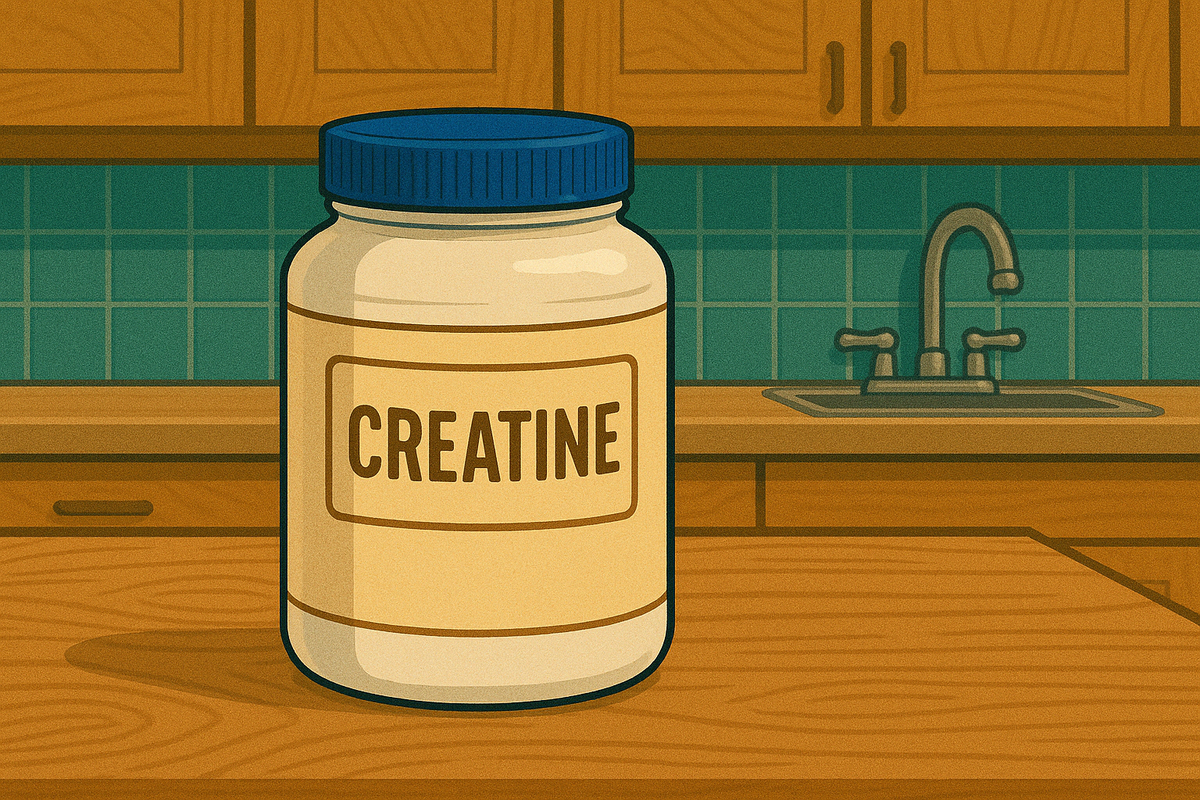
Have you ever tried a low-carb diet only to find your workouts suddenly feel like you’re running through quicksand? You’re not alone. While cutting carbs might help shed unwanted pounds, it often comes with an unwelcome side effect: your high-intensity exercise performance takes a nosedive.
But what if you could have your (carb-free) cake and eat it too? Recent research suggests that adding creatine to your low-carb diet might be the workout-saving combo you’ve been looking for.
The Low-Carb Performance Problem
When you slash carbs to less than 30% of your daily calories, your body goes through some major changes. While these changes can be great for fat loss, they’re not always friendly to your HIIT workouts, sprint intervals, or heavy lifting sessions.
Think of it like this: your muscles prefer carbs as their premium, quick-burning fuel for intense efforts. Switching to a low-carb diet is like suddenly putting regular gas in a sports car designed for premium. It’ll still run, but not at its peak performance.
This is why many weekend warriors and fitness enthusiasts find themselves struggling with decreased strength, power, and endurance during their most challenging workouts after going low-carb.
Enter Creatine: Your Low-Carb Workout Buddy
Here’s where things get interesting. Researchers at several universities recently studied whether adding creatine supplementation to a low-carb diet could help maintain exercise performance during high-intensity interval exercise.
The results? While the low-carb-only group saw their performance drop by about 35%, the low-carb-plus-creatine group actually improved their performance by roughly 30%!
That’s like finding out the right additive can make that regular gas work even better than premium in your sports car.
What’s Actually Happening in Your Muscles?
During high-intensity exercise, your body relies on three energy systems:
- The immediate ATP system (lasts seconds)
- The phosphocreatine (PCr) system (lasts 5-10 seconds)
- The glycolytic system (carb-burning system)
When you go low-carb, you reduce the effectiveness of that third system. But creatine supplementation boosts your second system (PCr), potentially making up for what you’re losing from the carb-burning system.
Creatine acts like an emergency backup generator when your main power supply (carbs) gets limited. It helps maintain your ability to produce quick, powerful movements even when your glycogen stores are running low.
How to Make This Work for You
Ready to give this combo a try? Here’s a practical approach based on the research:
1. Plan Your Low-Carb Approach
- Aim for less than 30% of your calories from carbohydrates
- Increase your protein and healthy fat intake to compensate
- Track your food in a nutrition app for the first week to ensure you’re hitting these targets
2. Add Creatine Properly
- Start with a standard loading phase: 20g of creatine monohydrate daily for 5-7 days
- Divide this into 4-5 smaller doses throughout the day (about 4-5g each)
- After loading, continue with a maintenance dose of 3-5g daily
- Mix it with warm water for better dissolution
3. Time Your Hardest Workouts Strategically
- Give your body at least 5-7 days to adapt to both the low-carb diet and creatine loading
- Monitor your performance and energy levels
- Consider saving your most intense training sessions for after this adaptation period
Who This Works Best For
This approach isn’t just for elite athletes. It could be perfect for:
- Weekend warriors looking to lean out without sacrificing their pickup game performance
- Fitness enthusiasts wanting to drop body fat while maintaining their HIIT class intensity
- Active adults over 40 who are watching carbs but still want explosive power in their workouts
- Anyone whose exercise routine includes short bursts of high-intensity effort
The Bottom Line
Cutting carbs doesn’t have to mean cutting workout intensity. By strategically adding creatine to your low-carb approach, you might be able to maintain—or even improve—your high-intensity exercise performance while still reaping the benefits of a lower-carb diet.
Just remember: this isn’t magic. Proper hydration, adequate rest, and listening to your body are still essential components of any successful nutrition and exercise program.
This article is based on research by Stephanie A. Born, Ph.D. and colleagues, published in the Journal of Exercise and Nutrition, 2024, Volume 7 (Issue 1): 11.
Discover More
- Can Creatine Save Your Workout When Cutting Carbs?
- Carnivore Diet for Athletes: Do You Need Carbs After All?
- Mix It Up! How to Combine Cardio and Strength Training for Maximum Results
- Rocking Your Walk: How Unstable Shoes Could Strengthen Your Feet and Improve Your Balance
- Trail Running Safety: Navigate the Path to Injury-Free Adventures
- Tech Your Way to Better Fitness: How Older Adults Are Using Digital Tools to Stay Active
- Rest Periods Matter: Finding Your Sweet Spot for High-Intensity Sprint Training
- Supercharge Your Jump: How Adding Bands to Your Deadlift Can Boost Performance
- Caffeine Before Exercise: Is Your Pre-Workout Cup of Joe Actually Helping You Burn Fat?
- Paws-Itively Perfect Exercise: How Your Dog Can Be Your Best Workout Partner
- The Long and Short of It: How Pole Length Can Boost Your Cross-Country Skiing Performance
- Time-Restricted Eating: Get Leaner Without Losing Your Gains
- Boost Your Strength & Shed Fat: Essential Amino Acids + Resistance Training
- Finding Your Perfect Fit: How Footwear Affects Performance and Injury Risk
- HIIT vs. Moderate Exercise: The Mood Rollercoaster Your Workout Takes You On
- Hydration Hype: Do Specialty Drinks Boost Exercise Performance?
- Move It or Lose It: How Your Daily Movement Patterns Affect Your Lifespan
- Moving Matters: How Small Steps Can Keep You Stronger for Longer
- Say Cheese! How Adding Cheese to Resistance Training Can Improve Your Body and Gut Health
- Take Your Workout to the Great Outdoors: How Nature Boosts Your Exercise Benefits See more
